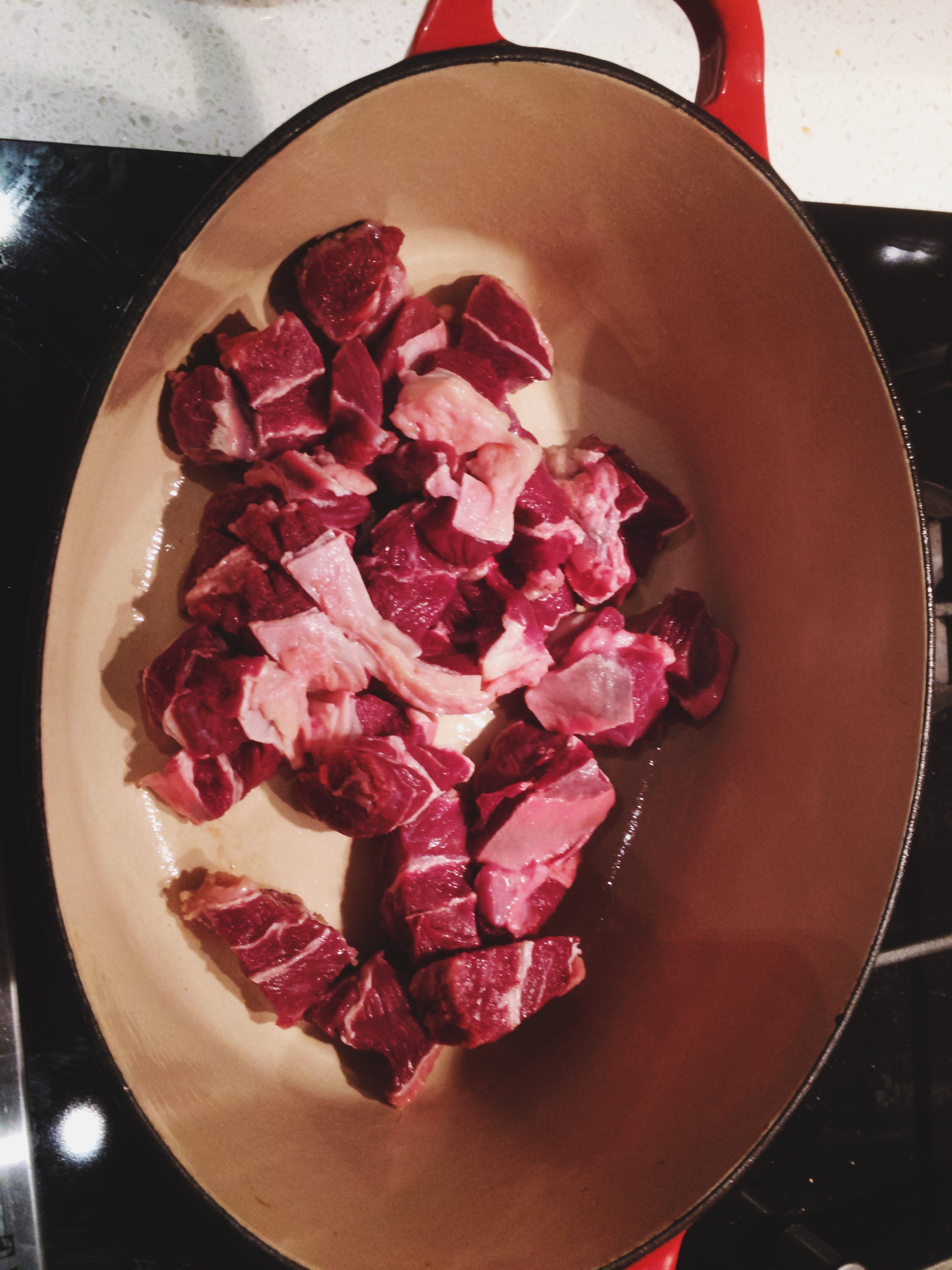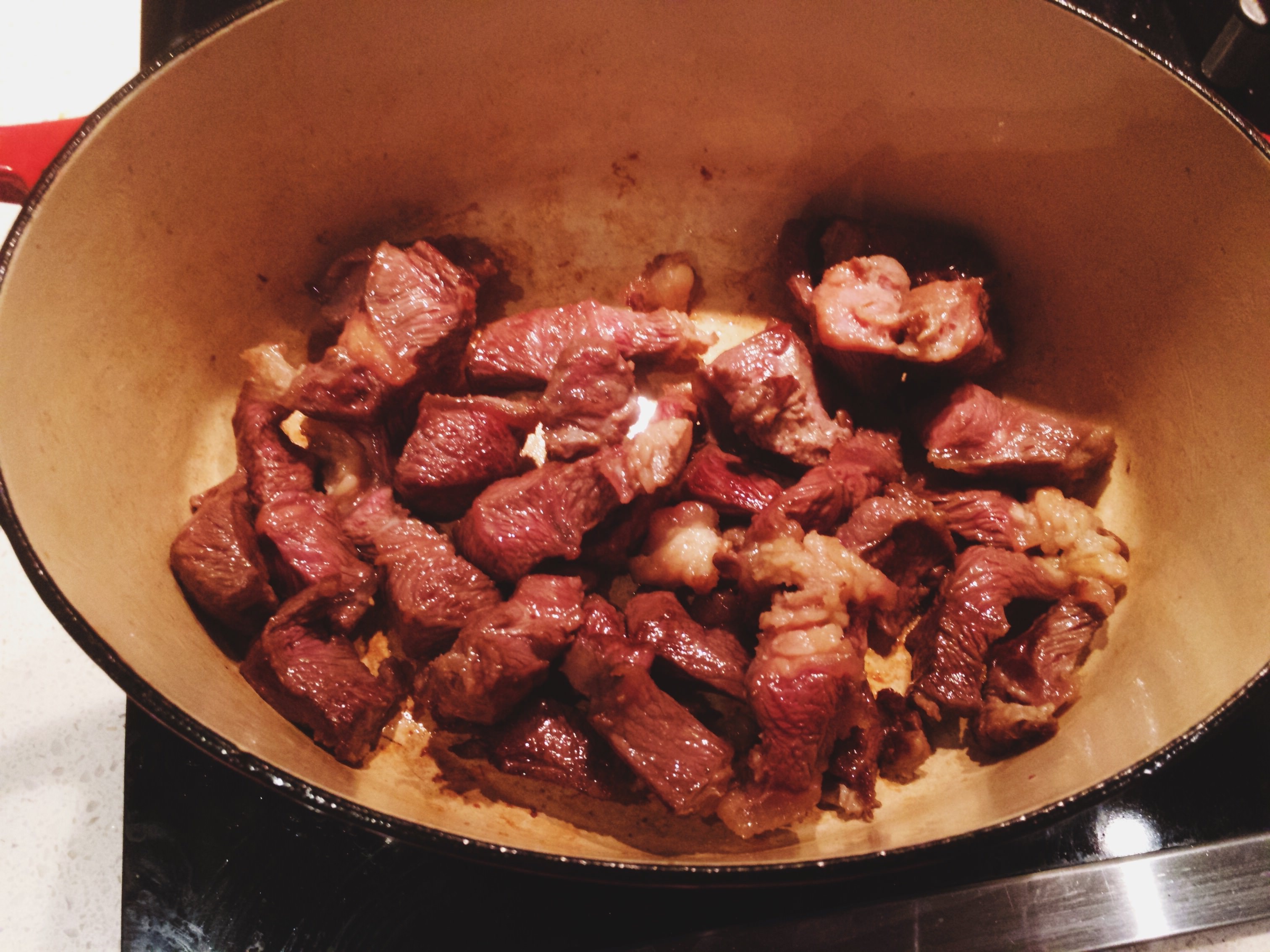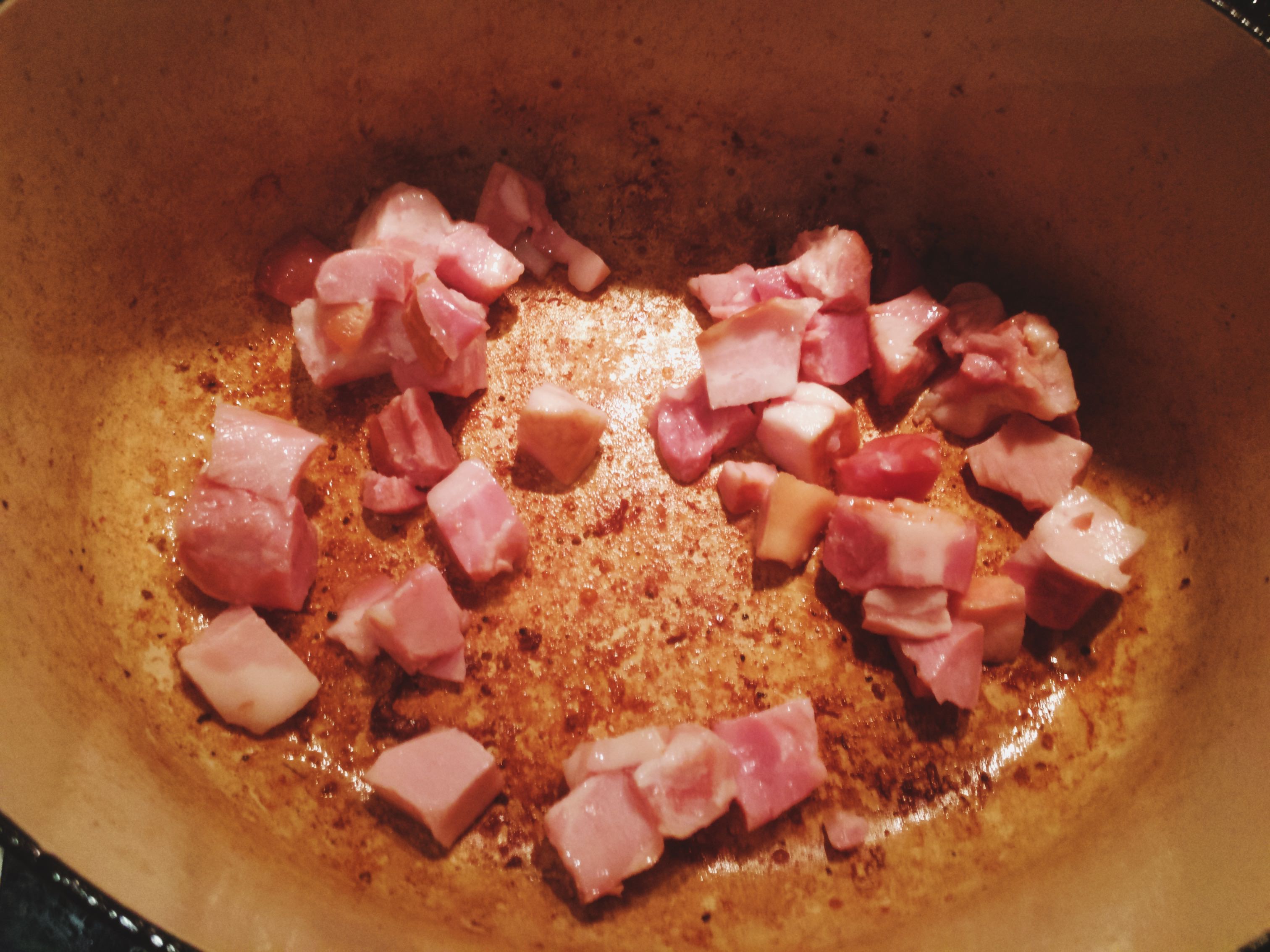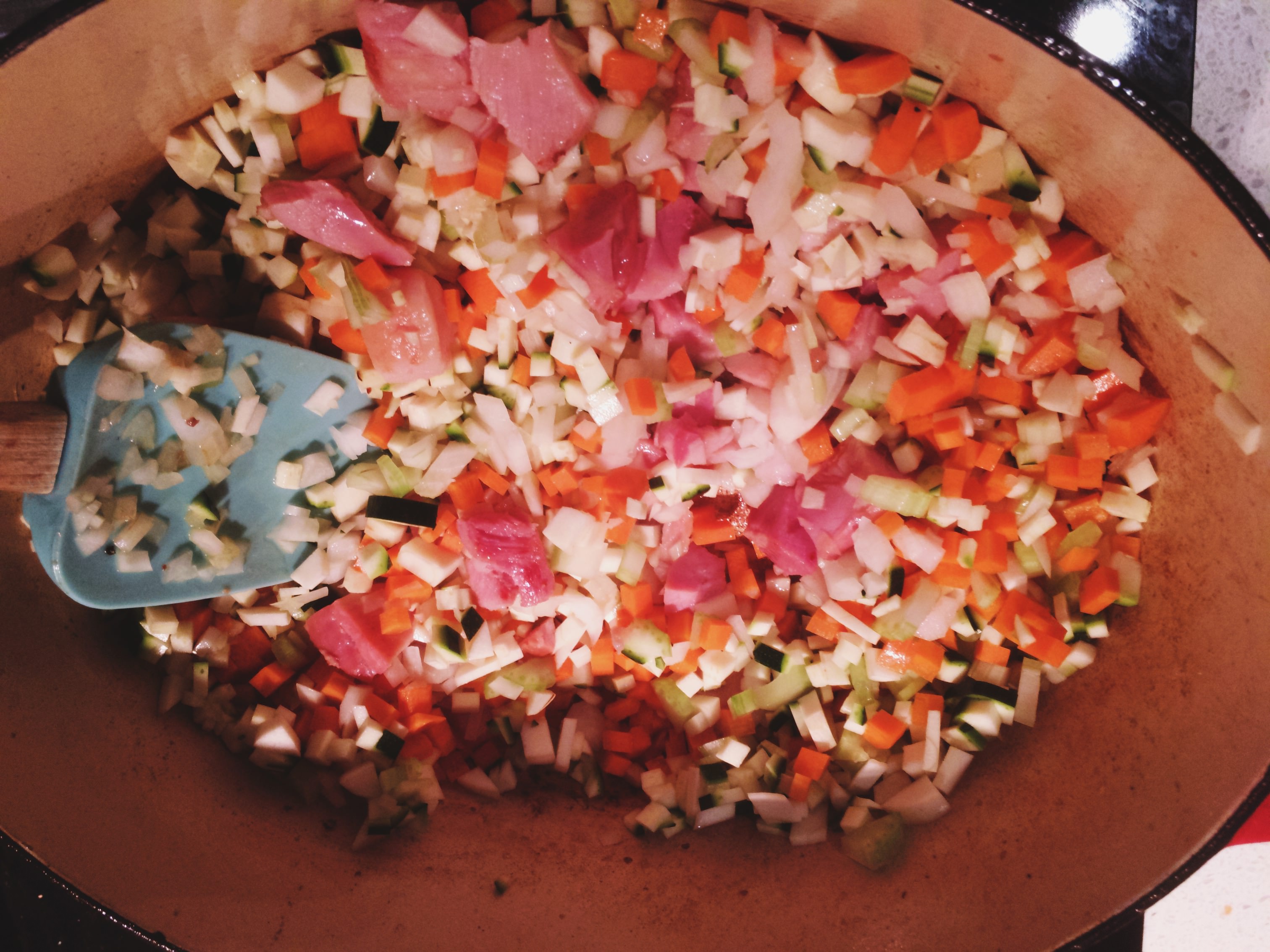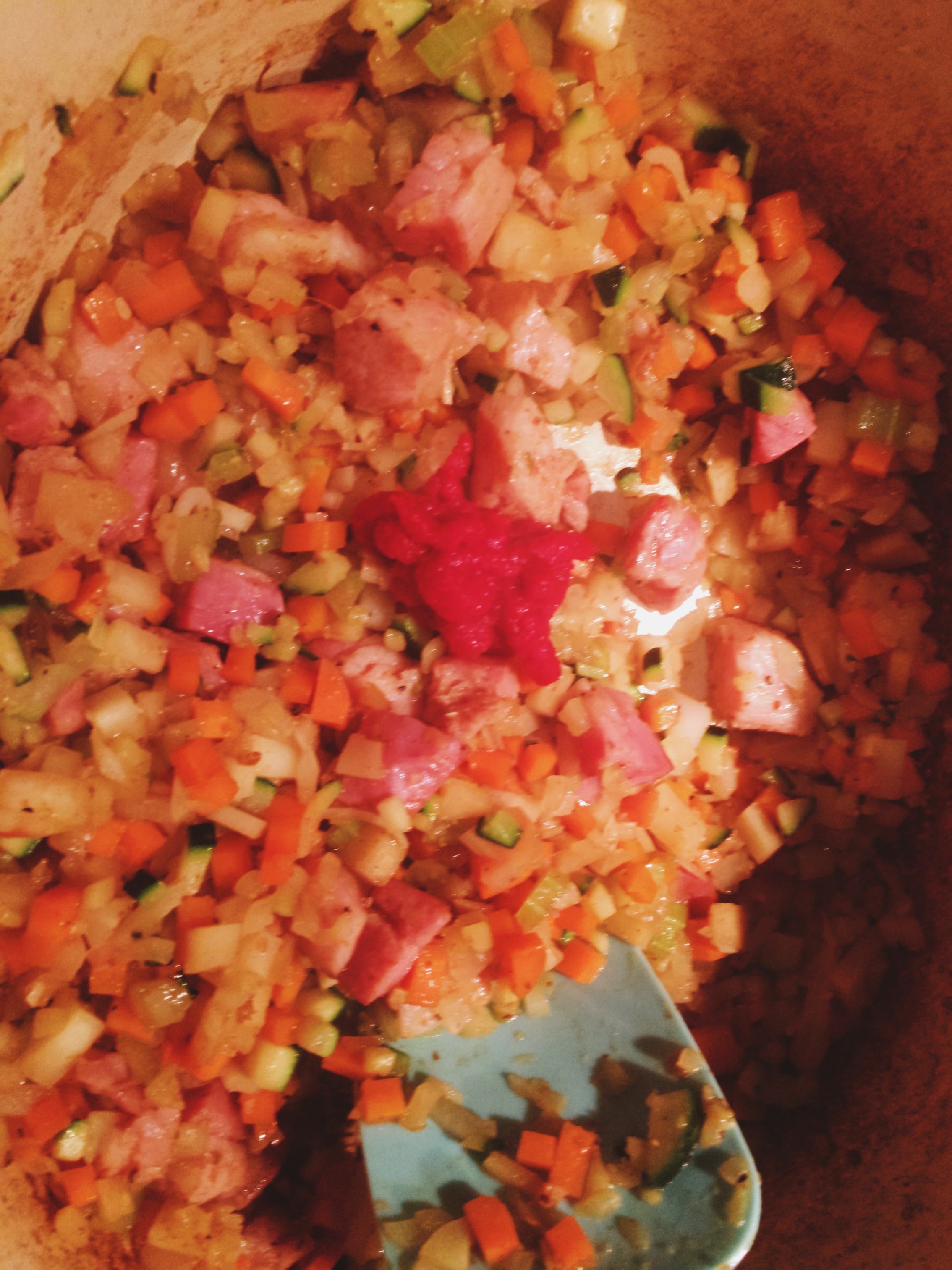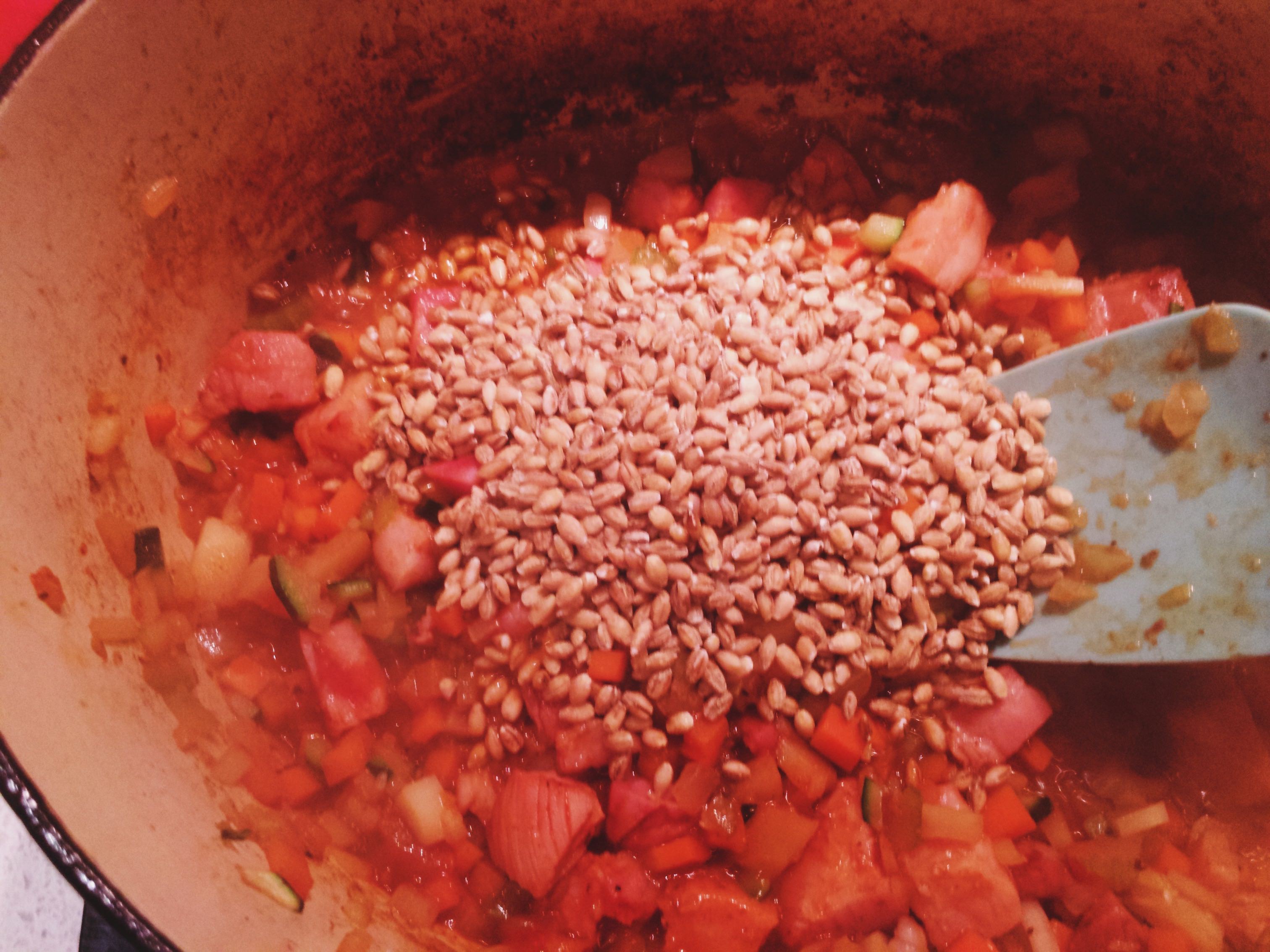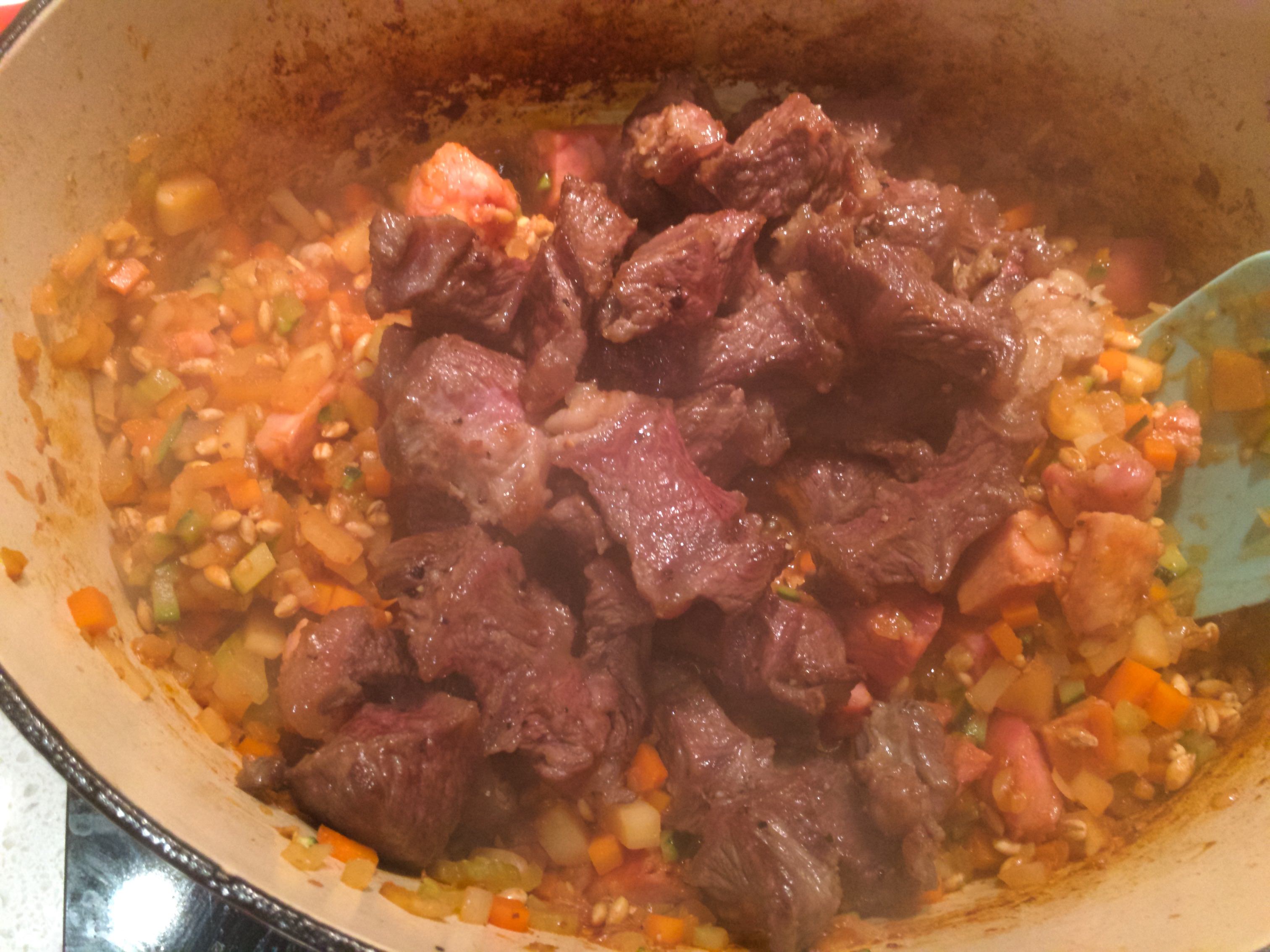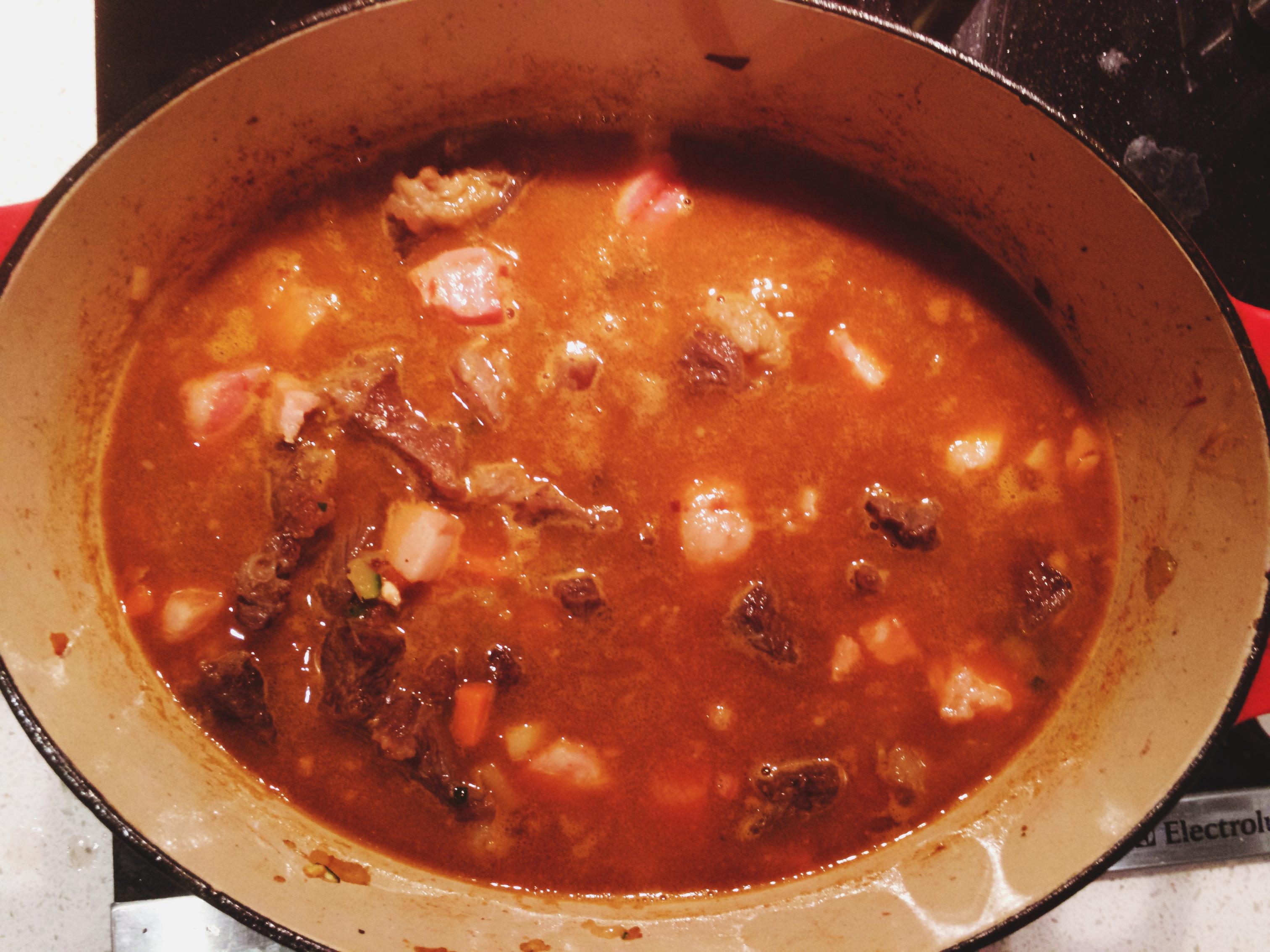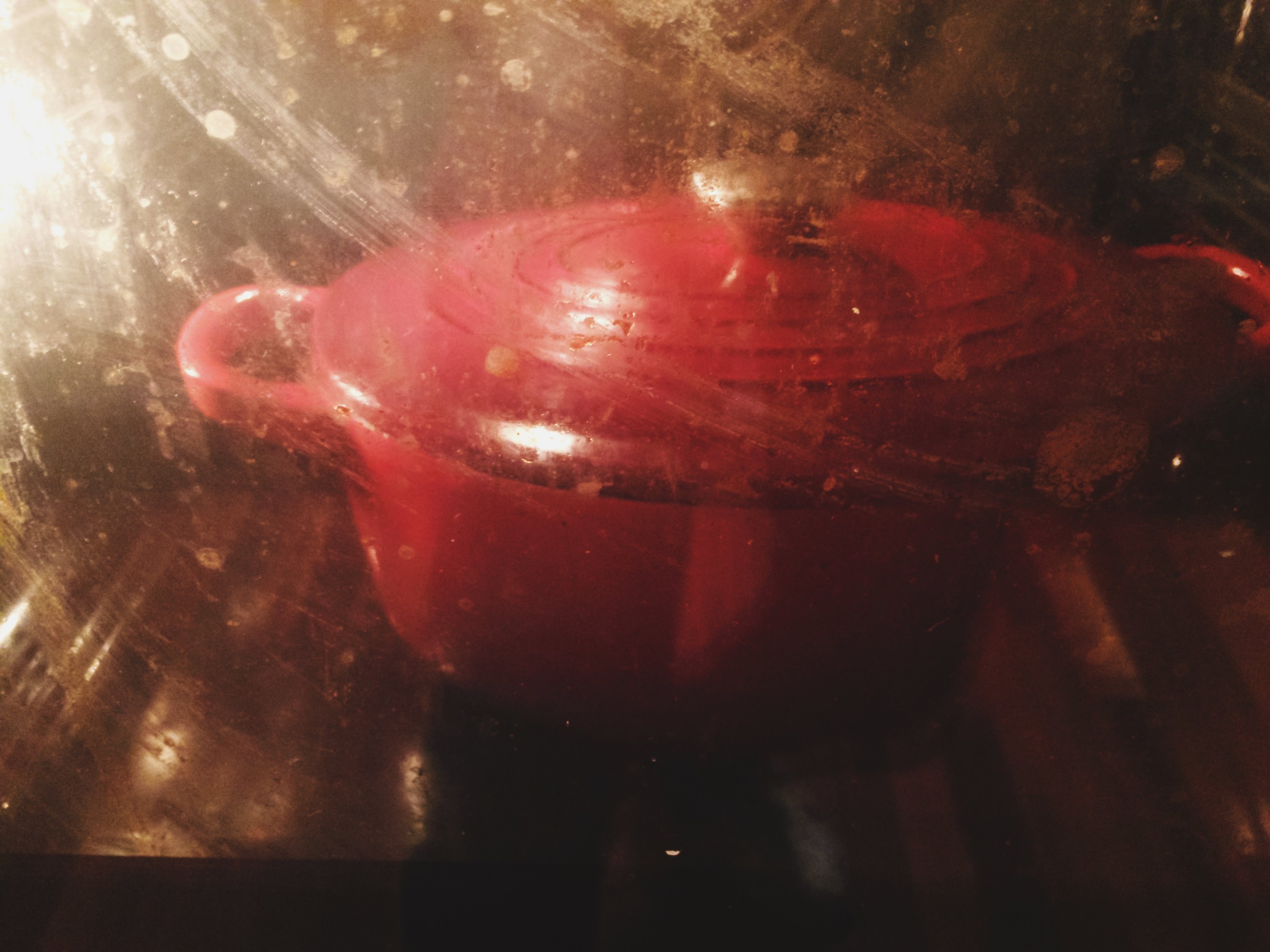Trigaaar asked (in another thread) for my recipee for ragu. I kinda hesitate to post it here because I'm not a pro chef and there are lots of pro chefs here and even a few Italian pro chefs who will undoubtedly know much more about this than me. I'll take this as an opportunity to learn from you guys.
Anyway, here is my recipee. It's my modification of one I found in a Marcella Hazan cookbook. Basically I just made it bigger and increased the proportion of vegetables. Let me know how close I am to authentic or if you have any suggestions for improving it. Or feel free to post your own. I do enjoy making it when I have the time because there's lots of knifework in the soffrito. The different ingredients in the soffrito also allow comparison between knives for various aspects of cutting ability (thinness behind edge, food release, rock chopping, etc...)
To make this quantity, you need a big stockpot.
INGREDIENTS :
Olive oil.
3 large onions, finely diced (2-3 mm dice works well for all soffrito ingredients).
1 kg carrots, finely diced.
Other finely diced veggies can be added to the soffrito (I have used zucchini, yellow button squash and eggplant with success).
1.5 kg high fat minced beef (you can substitute up to about 500g of this with minced pork).
Salt.
About 500 ml full fat milk.
Quarter to half a nutmeg, crushed or grated.
About 500 ml white wine (FWIW, I never cook with wine I wouldn't drink).
2kg fresh or canned tomatoes. Fresh is best if they are in season. Especially if you grew them.
METHOD:
This dish needs frequent stirring.
Sweat the onion over low heat in olive oil for 2-3 mins.
Add carrots, celery and remaining soffrito ingredients and cook on medium for a few minutes.
Add the meat and seperate the grains with a fork. Add the salt and cook until the meat has lost its red raw colour.
Add the milk and simmer on low heat until excess liquid has evaporated (maybe half an hour), stirring frequently.
Add the nutmeg.
Add the wine. Cook until excess liquid has evaporated. I do this on medium heat but I thik that low heat (and longer time) is more authentic. Continue frequent stirring.
Add tomatoes. Cook on low heat until excess liquid has evaporated. Continue frequent stirring. I do this on medium heat if I'm in a hurry. Marcella Hazan's recipee actually says to cook for at least 4 hours on low, adding a little water when it gets dry. This certainly gives a very rich, complex ragu but the quicker version is still pretty nice.
I usually serve with penne because my kids can get it on their fork easily. I think taglitelle may be more authentic. Apparently in Bologna, it is rarely or never served with spaghetti (despite its English language monniker). I also make lasagne with it (sometimes substituting eggplant slices fot lasagne sheets). All of these freeze well and make a quick and easy weekday meal when reheated which is very popular with the kids and contains a lot more veggies than they realise.
Before I was a knife nut, I used a food processor (hangs head in shame). Texture and flavour are much much much better when the sofritto is cut by hand.
How do you make ragu?
Anyway, here is my recipee. It's my modification of one I found in a Marcella Hazan cookbook. Basically I just made it bigger and increased the proportion of vegetables. Let me know how close I am to authentic or if you have any suggestions for improving it. Or feel free to post your own. I do enjoy making it when I have the time because there's lots of knifework in the soffrito. The different ingredients in the soffrito also allow comparison between knives for various aspects of cutting ability (thinness behind edge, food release, rock chopping, etc...)
To make this quantity, you need a big stockpot.
INGREDIENTS :
Olive oil.
3 large onions, finely diced (2-3 mm dice works well for all soffrito ingredients).
1 kg carrots, finely diced.
Other finely diced veggies can be added to the soffrito (I have used zucchini, yellow button squash and eggplant with success).
1.5 kg high fat minced beef (you can substitute up to about 500g of this with minced pork).
Salt.
About 500 ml full fat milk.
Quarter to half a nutmeg, crushed or grated.
About 500 ml white wine (FWIW, I never cook with wine I wouldn't drink).
2kg fresh or canned tomatoes. Fresh is best if they are in season. Especially if you grew them.
METHOD:
This dish needs frequent stirring.
Sweat the onion over low heat in olive oil for 2-3 mins.
Add carrots, celery and remaining soffrito ingredients and cook on medium for a few minutes.
Add the meat and seperate the grains with a fork. Add the salt and cook until the meat has lost its red raw colour.
Add the milk and simmer on low heat until excess liquid has evaporated (maybe half an hour), stirring frequently.
Add the nutmeg.
Add the wine. Cook until excess liquid has evaporated. I do this on medium heat but I thik that low heat (and longer time) is more authentic. Continue frequent stirring.
Add tomatoes. Cook on low heat until excess liquid has evaporated. Continue frequent stirring. I do this on medium heat if I'm in a hurry. Marcella Hazan's recipee actually says to cook for at least 4 hours on low, adding a little water when it gets dry. This certainly gives a very rich, complex ragu but the quicker version is still pretty nice.
I usually serve with penne because my kids can get it on their fork easily. I think taglitelle may be more authentic. Apparently in Bologna, it is rarely or never served with spaghetti (despite its English language monniker). I also make lasagne with it (sometimes substituting eggplant slices fot lasagne sheets). All of these freeze well and make a quick and easy weekday meal when reheated which is very popular with the kids and contains a lot more veggies than they realise.
Before I was a knife nut, I used a food processor (hangs head in shame). Texture and flavour are much much much better when the sofritto is cut by hand.
How do you make ragu?





